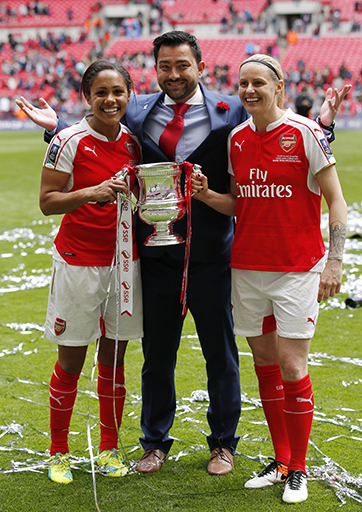5.2 Team effectiveness framework
To help think about the complexity surrounding team effectiveness in both football and business it is useful to have a framework that acts as a map to help explore different avenues. There are a number of theories and models of team effectiveness but Cohen and Bailey’s (1997) model is particularly useful.
It identifies seven avenues to explore when looking at teams.
- Environmental factors: the external business environment in which the organisation is embedded and its influence on how the organisation operates.
In football the characteristics of the football business we’ve studied here, the stability of the football club’s ownership and the turbulence or otherwise of the team’s league standing will partly influence the team’s workings and culture.
- The design features: The way the team task is set up and designed by leaders including the clarity of roles within the team.
In football design features include the degree of autonomy of the manager the extent of clear playing roles within a side, the way support staff report and how players interact with other parts of the club hierarchy. Consider the extent to which football clubs design aspects of their business operation to support team success.
- Team composition: How big should the optimal team be; how long should they be contracted; what is the best mix of ages and nationalities?
In football consider the most effective blend of a squad of 25 players, youth versus experience, the player options available for different defensive or attacking configurations and the proportion of overseas players from one or a mixture of nationalities.
- Organisational factors: The design of aspects such as rewards, training and types of resources available to a team.
In football this relates to wage structure, win bonuses, training facilities and spending. For example, small gestures, such as the dressing room design and layout or the travel arrangements to matches, may contribute to how players and staff feel about the team. Also consider a financial incentive such as ‘clean sheet bonus’ payable to the whole team rather than just the defence.
- Processes: Interactions such as communication and conflict resolution both within the team but also outside it.
In football processes include the mechanisms, if any, for internal squad dialogue, discussion, the induction of new players and how the squad approaches external demands such as the fans, media, sponsors and community engagement.
- Psychological and social attributes of the team: Shared team understandings, characteristics, beliefs, objectives, identity, emotional tone, cohesiveness and team members having similar mindsets.
This connects closely to a cohesive football squad who would have shared norms and a strong team identity – many small details, processes, design and organisational features interact with cohesion.
- The measures of effectiveness: In business, team effectiveness can be measured in a number of different ways which influence teams, such as productivity, quality, job satisfaction, trust, staff turnover, staff absenteeism.
In a football team, effectiveness is normally measured by results on the pitch, translating to league position. Other measures might include the quality of the performance, and the cohesiveness and resilience of play. The financial performance, the degree of recent investment in new players and emergence of young talents within the squad might also be a further measure of effectiveness.
Cohen and Bailey’s ideas have had a huge influence on the study of effective teams. Two points are worth highlighting at:
- The psychological and social influences on the team are only one factor – it is often tempting when a team is failing to blame one team member for their apparently ‘difficult’ behaviour. Individual contributions are rarely if ever the only reason why teams succeed or fail.
- While teams are made up of individuals these teams are in turn part of an organisation which itself is part of a wider context – all of these factors will play a part in team success. There is no one single magic or simple explanation.

